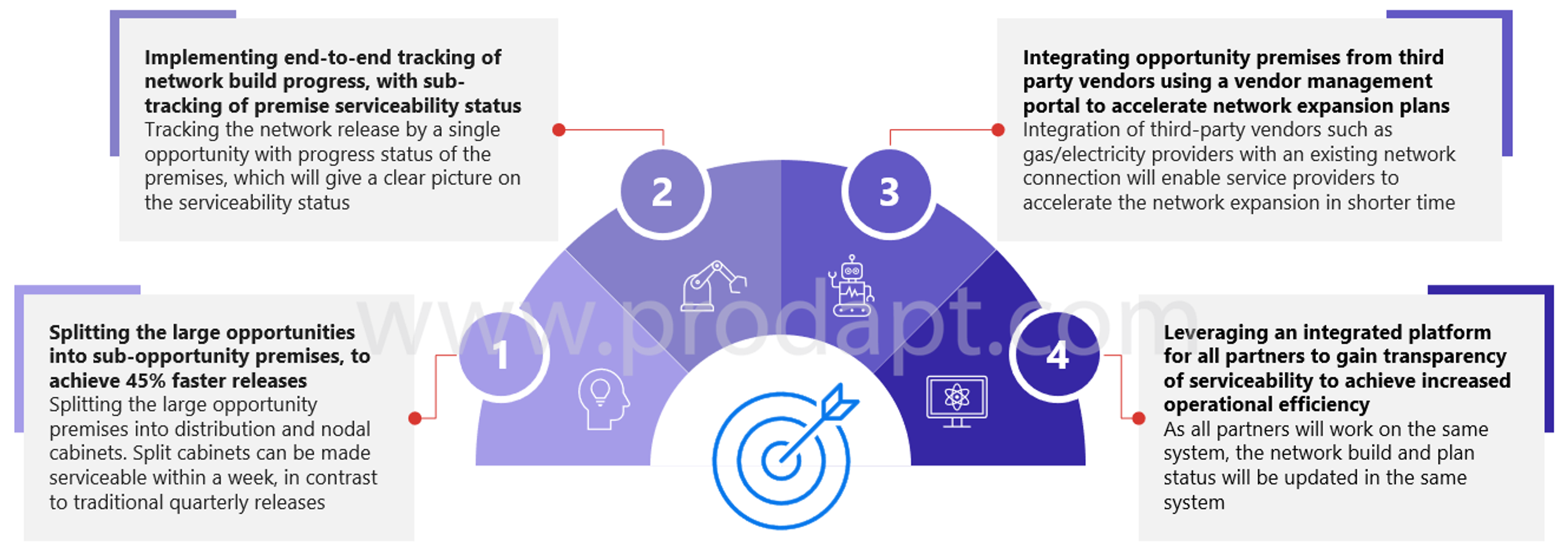Accelerate fiber rollout using a digital workflow strategy
Reduce time-to-market of FTTP delivery by 45%
As the demand for broadband rises, so does the complexity of fiber networks. Most countries around the globe aim to deliver full-fiber broadband to millions of premises in the next 5-10 years. Moreover, the global pandemic has changed the way we work and live, and fiber networks have never played such a vital part in unlocking our digital futures.
But this comes at a time when the costs associated with fiber rollout remain high, particularly as fiber operators and service providers are struggling with the following challenges:
- Multiple legacy and siloed systems affect the time-to-market
- Lack of visibility of premise serviceability restrains service providers from measuring the progress of fiber rollout
- Limited automation across the fiber rollout process results in delayed releases
- Low system security, especially in an ecosystem where multiple partners/vendors are involved, where they cannot have the visibility of one another’s information such as the quotes, plans, costs, etc.
To overcome the above challenges, service providers must transform their workflow by shifting from siloed network rollout to an Opportunity, Planning, Build, Release (OPBR) unified workflow strategy. The OPBR strategy integrates the opportunity identification, network planning, build and release management in an agile model offering scalability, accountability, and collaboration capabilities to the service providers.

In the OPBR strategy, the idea is to split a large opportunity premise (e.g., a residential area with 10,000 houses) into multiple sub-opportunity premises (e.g., address groups and streets), thereby accelerating the network release by 45% as compared to the traditional process.
With a better visibility of the network build progress, service providers can get better overall awareness of the network, resulting in efficiency gains. Repetitive planning and engineering tasks can be automated through software implementation, allowing staff to dedicate more time to higher value activities, thereby making the network more reliable and resilient.
Benefits of the OPBR workflow strategy include:
- 45% faster time-to-market of fiber rollouts to premises
- 35% reduction in the average cost per premises (CPP)
- 50-70% reduction of overall manual efforts in the end-to-end fiber rollout workflow
Service providers must transform their workflow by shifting from siloed network rollout to an Opportunity, Planning, Build, Release (OPBR) unified workflow strategy.



